Gastrointestinal Elimination
7.6 Antidiarrheal Medications and Laxatives
There are three common mechanisms of action of antidiarrheal medications: adsorbents, which help eliminate the toxin or bacteria from the GI tract; antimotility agents, which slow peristalsis; and probiotics, which help to restore the normal bacteria found in the lower intestine. Nurses should closely monitor for dehydration; oral rehydration agents may be needed to replace fluid and electrolyte loss, but they do not treat diarrhea. Antibacterial agents may also be used to treat diarrhea caused by specific infections, such as campylobacter or giardia, but they are not routinely needed.[1]
When administering antidiarrheals, the nurse should document an abdominal assessment, frequency of bowel movements and stool characteristics, and if there is skin breakdown in the anal area. The nurse should also keep in mind that antidiarrheals should be used very cautiously with children because some categories are contraindicated.
Adsorbents
Adsorption is the adhesion of molecules to a surface. This process differs from absorption, where a substance is dissolved or penetrates into a surface. Bismuth subsalicylate (brand name Pepto Bismol) is an example of an adsorbent (see Figure 7.6a[2]).

Mechanism of Action Adsorbent medications work by coating the walls of the GI tract and binding the causative bacteria or toxin for elimination from the GI tract through the stool.[3] Bismuth subsalicylate also decreases the flow of fluids and electrolytes into the bowel, reducing inflammation within the intestine.[4]
Specific Administration Considerations Bismuth subsalicylate contains salicylate. It should be avoided if the client has an allergy to salicylates (including aspirin) or if the client is taking other salicylate products such as aspirin. It should not be used if the client has an ulcer, a bleeding problem, or bloody or black stool. For more information on salicylates, read Chapter 10.6. Children and teenagers who have or are recovering from chickenpox or flu-like symptoms should not use this product. When using this product, if changes in behavior with nausea and vomiting occur, consult a doctor because these symptoms could be an early sign of Reye’s syndrome, a rare but serious illness. Liquid products should be shaken well before use. Tablets should be swallowed whole and not chewed unless they are a chewable tablet. Medication can cause a black or darkened tongue. If symptoms worsen, a fever, or ringing in the ears occurs, or if diarrhea lasts longer than 48 hours, contact the provider. [5],[6]
Client Teaching & Education
Clients should be advised to take medication as directed. They should be aware of potential color changes to stool that may occur and that the medication contains aspirin. They should discontinue the medication if tinnitus occurs.[7]
Antimotility
Antimotility medications help to treat diarrhea by slowing peristalsis. There are two categories of antimotility medication: anticholinergics and opiate-like medication.
Anticholinergics
Mechanism of Action Hyoscyamine is an anticholinergic that works on the smooth muscle of the GI tract to inhibit propulsive motility, and decreases gastric acid secretion.
Specific Administration Considerations Read drug label information for all contraindications, including but not limited to glaucoma, myasthenia gravis, and paralytic ileus. Diarrhea may be an early symptom of incomplete intestinal obstruction, and the use of this drug would be inappropriate and possibly harmful. CNS symptoms and other adverse effects that are common with anticholinergic medications may occur.[8],[9]
Patient Teaching & Education
Clients should receive instruction that these medications may cause dizziness and drowsiness. If clients experience dry mouth, frequent oral hygiene may alleviate discomfort.[10]
Opioid-like medication
Mechanism of Action Loperamide has an opioid-like chemical structure but causes fewer CNS effects. It works by decreasing the flow of fluids and electrolytes into the bowel and by slowing down the movement of the bowel to decrease the number of bowel movements (see Figure 7.6b[11]).

Specific Administration Considerations Loperamide should not be given to a child younger than two years of age because of the risk of serious breathing and heart problems. Taking more than the prescribed dose can cause a serious abnormal heart rhythm that can lead to death. Read the drug label carefully for information about interaction with other medications, especially antidysrhythmics and antipsychotics.[12],[13]
Patient Teaching & Education
Clients should take medications as directed. They should also avoid alcohol and other CNS depressants. The medications may cause drowsiness.[14]
Probiotics
Probiotics are used for the prevention and treatment of diarrhea. They are often used concomitantly with antibiotics to prevent the common associated side effects of diarrhea (see Figure 7.6c[15]). An example of a probiotic is lactobacillus.
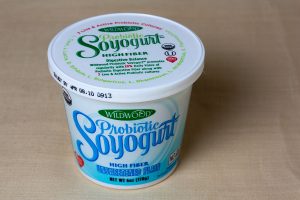
Mechanism of Action Probiotics help replenish normal bacterial flora in the gastrointestinal tract.
Specific Administration Considerations/ Patient Teaching & Education Side effects of probiotics, such as gas and bloating, are mild. Probiotics are safe for use in children.[16],[17]
Now let’s take a closer look at the medication grids comparing medications used to treat diarrhea, in Table 7.6a[18][19][20].
Medication cards like this are intended to assist students to learn key points about each medication. Because information about medication is constantly changing, nurses should always consult evidence-based resources to review current recommendations before administering specific medication. Basic information related to each class of medication is outlined below. Prototype or generic medication examples are also hyperlinked to a free resource at Daily Med. On the home page, enter the drug name in the search bar to read more about the medication.
| Class | Prototype/Generic | Administration Considerations | Therapeutic Effects | Adverse/Side Effects |
|---|---|---|---|---|
| Adsorbents | bismuth subsalicylate (Pepto Bismol) | Avoid if taking other salicylates. Do not use in children or teenagers recovering from chickenpox or flu-like symptoms as may cause Reye's syndrome. Do not use if the client has an ulcer, bleeding problem, or bloody or black stool. | Decreased diarrhea symptoms | May cause black or darkened tongue. Contact provider if symptoms worsen, a fever or ringing in the ears occurs, or if diarrhea lasts longer than 48 hours. |
| Anticholinergic | hyoscyamine | Contraindicated in glaucoma, myasthenia gravis, or paralytic ileus. | Decreased diarrhea symptoms | May cause CNS and other adverse effects associated with anticholinergic medication. |
| Opiate-like medication | loperamide (Imodium) | Contraindicated in children younger than 2 and with several other medications; read drug label information before administering. | Decreased diarrhea symptoms | Black Box Warning: May cause abnormal heart rhythm. |
| Probiotics | lactobacillus | Pediatric dosing is age-based and varies by product. | Prevention of diarrhea or decreased symptoms of diarrhea | Mild, such as gas and bloating. |
- A client has been prescribed loperamide for diarrhea associated with gastroenteritis. The client begins to complain of "heart palpitations." What is the nurse's next best response?
- A child, aged 6, has diarrhea. The mother asks the nurse what OTC medications she can provide to her child to help resolve diarrhea. What is the nurse's best response?
Note: Answers to the Critical Thinking activities can be found in the "Answer Key" sections at the end of the book.
Laxatives
In contrast to diarrhea, constipation is when there are too few stools, or stools that require effort to increase elimination.
There are five categories of laxative medications commonly used to treat constipation: fiber supplements, stool softeners, osmotic agent, lubricants, and stimulants (See Table 7.6b). Fiber supplements and stool softeners are often used daily to prevent constipation, whereas the other laxative categories are used to treat constipation. Table 7.6b compares the mechanism of action for each laxative category and includes common prototype and OTC brand names.[24],[25],[26]
| Category | Prototypes | Mechanism of Action |
|---|---|---|
| Fiber supplements | psyllium (Metamucil) | Bulk-forming to facilitate passage of stool through the rectum |
| Stool softeners | Docusate (Colace) | Facilitates movement of water and fats into stool |
| Osmotic agents | Milk of Magnesia; polyethylene glycol (PEG) 3350 (Miralax) | Causes water to be retained with the stool, increasing the number of bowel movements and softening the stool so it is easier to pass |
| Lubricants | mineral oil enema (Fleet) | Coats the stool to help seal in water |
| Stimulants | Bisacodyl (Dulcolax) | Causes the intestines to contract, inducing stool to move through the colon |
Fiber supplements
Psyllium (brand name Metamucil) is an example of a common OTC fiber supplement (see Figure 7.6d)[27]).
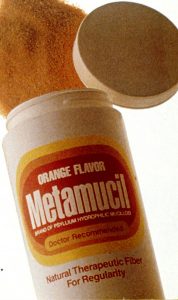
Mechanism of Action Psyllium adds bulk to the stool to facilitate passage through the rectum.
Specific Administration Considerations When administering, put one dose into an empty glass and mix with at least 8 ounces of water or other fluid. Taking this product without enough liquid may cause choking. Stir briskly and drink promptly. If mixture thickens, add more liquid and stir. Administer at least 2 hours before or 2 hours after other medications as it can affect absorption. Psyllium usually produces a bowel movement within 12 to 72 hours. It may cause bloating and cramping.
Patient Teaching & Education When teaching clients how to take psyllium at home, in addition to the above considerations, advise them to start with 1 dose per day but may gradually increase to 3 doses per day as necessary to maintain soft stools.
Stool Softeners
Docusate is a common OTC stool softener that is also used frequently in health care settings.
Mechanism of Action: Docusate facilitates the movement of water and fats into stool to make it soft and improve the regularity of bowel movements.
Specific Administration Considerations: Docusate usually produces a bowel movement in 12 to 72 hours. It may cause stomach cramping.
Osmotic Agents
Milk of Magnesia and polyethylene glycol 3350 (brand name Miralax) are examples of common osmotic agents used to promote a bowel movement (see figure 7.6e[28].
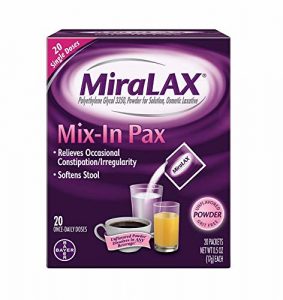
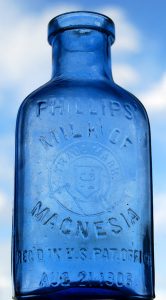
Mechanism of Action Osmotic agents cause water to be retained with the stool, increasing the number of bowel movements and softening the stool so it is easier to pass.
Specific Administration Considerations Polyethylene glycol 3350 has a bottle top that can be used as a measuring cap to contain 17 grams of powder when filled to the indicated line. Fill to top of clear section in cap, which is marked to indicate the correct dose (17 g); stir and dissolve in any 4 to 8 ounces of beverage (cold, hot or room temperature), and then administer.
Patient Teaching & Education In addition to the administration considerations above, teach clients that polyethylene glycol usually produces a bowel movement in 1-3 days. It may cause loose, watery stools.
Lubricants
A mineral oil enema (brand name Fleet enema) is an example of a lubricant laxative (see Figure 7.6f[29]).
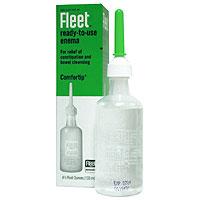
Mechanism of Action Mineral oil coats the stool to help seal in water.
Specific Administration Considerations Read drug label for children as some brands can be used in children aged 2 or older, whereas others are not intended for children.
Patient Teaching & Education A mineral oil enema generally produces a bowel movement in 2 to 15 minutes. It may cause stomach cramps, bloating, upset stomach, or diarrhea.
Stimulants
Bisacodyl is an example of a stimulant laxative.
Mechanism of Action Bisacodyl causes the intestines to contract, inducing the stool to move through the colon.
Specific Administration Considerations Oral dosage or rectal suppositories are available. See instructions for how to insert a rectal suppository. Instruct client to retain suppository for about 15 to 20 minutes (see Figure 7.6g[30]).
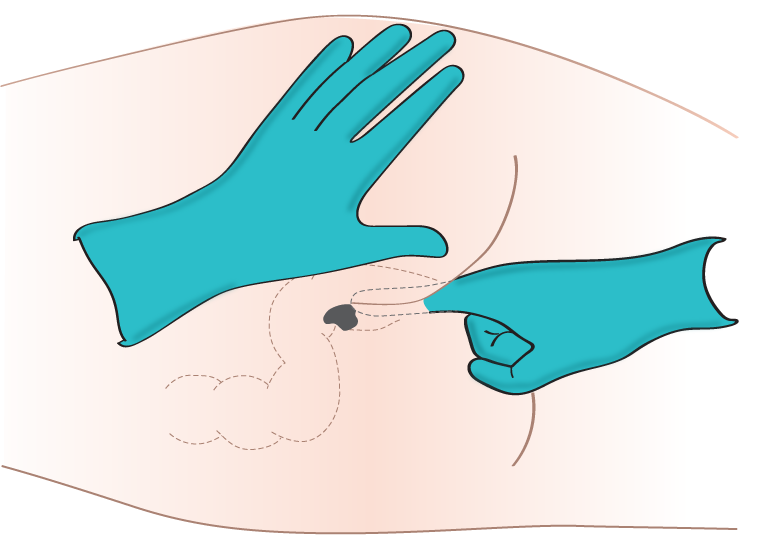
Patient Teaching & Education A bowel movement is generally produced in 15 minutes. Bisacodyl may cause stomach cramps, dizziness, or rectal burning.
Now let’s take a closer look at the medication grids comparing medications used to treat diarrhea Table 7.6a[31],[32]
Medication cards like this are intended to assist students to learn key points about each medication. Because information about medication is constantly changing, nurses should always consult evidence-based resources to review current recommendations before administering specific medication. Basic information related to each class of medication is outlined below. Prototype or generic medication examples are also hyperlinked to a free resource at Daily Med. On the home page, enter the drug name in the search bar to read more about the medication.
| Prototype/Generic | Administration Considerations | Therapeutic Effects | Adverse/Side Effects |
|---|---|---|---|
| psyllium (Metamucil) | Put one dose into an empty glass and mix with at least 8 ounces of water or other fluid. Taking this product without enough liquid may cause choking. Stir briskly and drink promptly. If mixture thickens, add more liquid and stir.
Usually produces a bowel movement within 12 to 72 hours. Administer at least 2 hours before or 2 hours after other medications as it can affect absorption. Start with 1 dose per day; may gradually increase to 3 doses per day as necessary. |
Improves regularity of bowel movements. | May cause bloating and cramping. |
| docusate | Usually produces bowel movement in 12 to 72 hours. | Softens stool and improves regularity of bowel movements. | May cause abdominal cramping. |
| polyethylene glycol 3350 (Miralax) | Usually produces a bowel movement in 1-3 days.
The bottle top is a measuring cap marked to contain 17 grams of powder when filled to the indicated line. For adults and children 17 years of age and older:
|
Softens stool and improves regularity of bowel movements. | May cause loose, watery stools. |
| Mineral oil enema | Read drug labels for children as some brands can be used in children aged 2 or older, whereas others are not intended for children.
Generally produces bowel movement in 2 to 15 minutes. |
Bowel movement within 15 minutes. | Stomach cramps, bloating, upset stomach, or diarrhea. |
| bisacodyl | Oral dosage or rectal suppositories are available.
To administer a rectal suppository: Position client on left side with the right knee up towards the chest. In the presence of anal fissures or hemorrhoids, suppositories should be coated at the tip with petroleum jelly. Remove foil and insert suppository well into rectum touching the bowel wall. Instruct client to retain suppository for about 15 to 20 minutes. A bowel movement is generally produced in 15 minutes to one hour. For children, read drug labels for dosage. |
Bowel movement within one hour. | Stomach cramps, dizziness, or rectal burning. |
Interactive Activity
A client who underwent hip surgery two days ago has not had a bowel movement since before admission. The client is receiving oxycontin ER 10 mg every 12 hours and oxycodone 5 mg every 4 hours for pain. The client describes abdominal discomfort and the nurse finds decreased bowel sounds in all quadrants. The nurse notifies the physician, follows the bowel protocol, and administers docusate sodium to the client.
- What are the potential causes of constipation that should be addressed for this client?
- What is the mechanism of action for docusate?
- The client asks how quickly the medication will work. What is the nurse's best response?
- What other preventative measures for constipation should the nurse teach the client?
- If docusate is not effective within 24 hours, what other medications can the nurse anticipate to be ordered?
Note: Answers to the Critical Thinking activities can be found in the "Answer Key" sections at the end of the book.
- World Health Organization. (2017, May 2). Diarrhoeal disease.https://www.who.int/en/news-room/fact-sheets/detail/diarrhoeal-disease ↵
- "PeptoBismol Bottle.JPG" by ParentingPatch is licensed under CC BY-SA 3.0 ↵
- Lilley, L., Collins, S., & Snyder, J. (2014). Pharmacology and the Nursing Process. pp. 782-862. Elsevier. ↵
- A.D.A.M. Medical Encyclopedia [Internet]. Atlanta (GA): A.D.A.M., Inc.; ©2019. Heartburn; [reviewed 2019 May 10; cited 2019 October 27]. https://medlineplus.gov/ency/anatomyvideos/000068.htm ↵
- This work is a derivative of Daily Med by U.S. National Library of Medicine in the public domain. ↵
- A.D.A.M. Medical Encyclopedia [Internet]. A.D.A.M. Medical Encyclopedia [Internet]. Atlanta (GA): A.D.A.M., Inc.; ©2019. Heartburn; [reviewed 2019 May 10; cited 2019 October 27]. https://medlineplus.gov/ency/anatomyvideos/000068.htm ↵
- uCentral from Unbound Medicine. https://www.unboundmedicine.com/ucentral ↵
- This work is a derivative of Daily Med by U.S. National Library of Medicine in the public domain. ↵
- A.D.A.M. Medical Encyclopedia [Internet]. Atlanta (GA): A.D.A.M., Inc.; ©2019. Heartburn; [reviewed 2019 May 10; cited 2019 October 27]. https://medlineplus.gov/ency/anatomyvideos/000068.htm ↵
- uCentral from Unbound Medicine. https://www.unboundmedicine.com/ucentral ↵
- "Loperamide2mg.JPG" by Kristoferb is licensed under CC BY-SA 3.0 ↵
- This work is a derivative of Daily Med by U.S. National Library of Medicine in the public domain. ↵
- A.D.A.M. Medical Encyclopedia [Internet]. Atlanta (GA): A.D.A.M., Inc.; ©2019. Heartburn; [reviewed 2019 May 10; cited 2019 October 27]. https://medlineplus.gov/ency/anatomyvideos/000068.htm ↵
- uCentral from Unbound Medicine. https://www.unboundmedicine.com/ucentral ↵
- "WildWood Probiotic Soyogurt" by Veganbaking.net is licensed under CC BY-SA 2.0 ↵
- This work is a derivative of Daily Med by U.S. National Library of Medicine in the public domain. ↵
- A.D.A.M. Medical Encyclopedia [Internet]. Atlanta (GA): A.D.A.M., Inc.; ©2019. Heartburn; [reviewed 2019 May 10; cited 2019 October 27]. https://medlineplus.gov/ency/anatomyvideos/000068.htm ↵
- Lilley, L., Collins, S., & Snyder, J. (2014). Pharmacology and the Nursing Process. pp. 782-862. Elsevier. ↵
- McCuistion, L., Vuljoin-DiMaggio, K., Winton, M, & Yeager, J. (2018). Pharmacology: A patient-centered nursing process approach. pp. 443-454. Elsevier. ↵
- This work is a derivative of Daily Med by U.S. National Library of Medicine in the public domain. ↵
- This work is a derivative of Daily Med by U.S. National Library of Medicine in the public domain. ↵
- RNPedia. (2021). https://www.rnpedia.com[/footnote[footnote]OpenMD.Com at openmd.com ↵
- uCentral from Unbound Medicine. https://www.unboundmedicine.com/ucentral ↵
- This work is a derivative of Daily Med by U.S. National Library of Medicine in the public domain. ↵
- National Institute of Diabetes and Digestive and Kidney Diseases, National Institute of Health. (2018). Treatment for constipation. https://www.niddk.nih.gov/health-information/digestive-diseases/constipation/treatment. ↵
- Drugs.com [Internet]. Fleet mineral oil enema (rectal); © 1996-2018 [updated 1 October 2019; cited 27 October 2019]. https://www.drugs.com/mtm/fleet-mineral-oil-enema-rectal.html ↵
- "Metamucil ad (cropped).jpg" by unknown is licensed under CC0 ↵
- "MiraLax Mix-In Pax, Unflavored, 20 Little Packets" by Ava Williams is licensed under CC0 and "Phillips' Milk of Magnesia, 1910's" by Roadsidepictures is licensed under CC BY-NC 2.0 ↵
- "fleet_enema" by Logesh79 is licensed under CC BY-NC 2.0 ↵
- "Administering-med-rectally-2.png" by British Columbia Institute of Technology (BCIT) is licensed under CC BY 4.0 ↵
- Lilley, L., Collins, S., & Snyder, J. (2014). Pharmacology and the Nursing Process. pp. 782-862. Elsevier. ↵
- McCuistion, L., Vuljoin-DiMaggio, K., Winton, M, & Yeager, J. (2018). Pharmacology: A patient-centered nursing process approach. pp. 443-454. Elsevier. ↵
- This work is a derivative of Daily Med by U.S. National Library of Medicine in the public domain. [footnote]Drugs.com [Internet]. Metamucil; © 2000-2019 [reviewed 20 November 2017; updated 1 October 2019; cited 27 October 2019]. https://www.drugs.com/mtm/metamucil.html ↵
- RNPedia. (2021). https://www.rnpedia.com ↵
- OpenMD.Com at openmd.com ↵
- uCentral from Unbound Medicine. https://www.unboundmedicine.com/ucentral ↵
Relieve the symptoms of diarrhea, such as an increased frequency and urgency when passing stools, but do not eliminate the cause of it.
Medications that help to treat diarrhea by slowing peristalsis.
The adhesion of molecules to a surface. For example, bismuth salicylate coats the walls of the GI tract and binds the causative bacteria or toxin for elimination from the GI tract through the stool.
Laxatives that facilitate movement of water and fats into stool to make it soft and improve regularity of bowel movements.
Cause water to be retained with the stool, increasing the number of bowel movements and softening the stool so it is easier to pass.
Laxatives that cause the intestines to contract, inducing stool to move through the colon.

